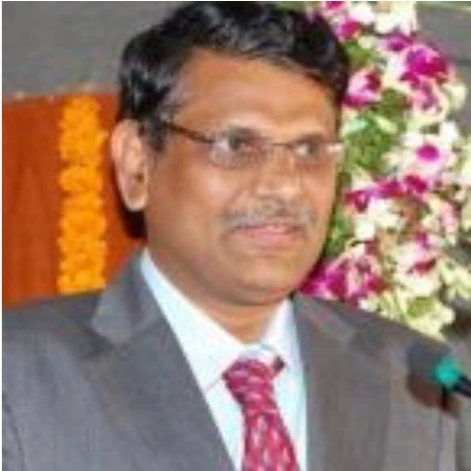International Journal of Image, Graphics and Signal Processing (IJIGSP)
IJIGSP Vol. 4, No. 10, 28 Sep. 2012
Cover page and Table of Contents: PDF (size: 460KB)
Face Recognition System Using Doubly Truncated Multivariate Gaussian Mixture Model and DCT Coefficients Under Logarithm Domain
Full Text (PDF, 460KB), PP.8-17
Views: 0 Downloads: 0
Author(s)
Index Terms
Face recognition system, EM algorithm, Doubly truncated multivariate Gaussian mixture model, DCT coefficients under logarithm domain
Abstract
In this paper, we introduce a face recognition algorithm based on doubly truncated multivariate Gaussian mixture model with DCT under logarithm domain. In face recognition, the face image is subject to the variation of illumination. The effect of illumination cannot be avoided by mere consideration of DCT coefficients as feature vector. The illumination effect can be minimized by utilizing DCT coefficients under logarithm domain and discarding sum of the DCT coefficients which represents the illumination in the face image. Here, it is assumed that the DCT coefficients under logarithm domain after adjusting the illumination follow a doubly truncated multivariate Gaussian mixture model. The truncation on the feature vector has a significant influence in improving the recognition rate of the system using EM algorithm with K-means or hierarchical clustering, the model parameters are estimated. A face recognition system is developed under Bayesian frame using maximum likelihood. The performance of the system is demonstrated by using the databases namely, JNTUK and Yale and comparing it’s performance with the face recognition system based on GMM. It is observed that the proposed face recognition system outperforms the existing systems.
Cite This Paper
D. Haritha,K.Srinivasa Rao,Ch. Satyanarayana,"Face Recognition System Using Doubly Truncated Multivariate Gaussian Mixture Model and DCT Coefficients Under Logarithm Domain", IJIGSP, vol.4, no.10, pp.8-17, 2012. DOI: 10.5815/ijigsp.2012.10.02
Reference
[1]Adini Y., Moses Y., and Ullman S. Face recognition: the Problem of compensating for Changes in Illumination Direction. IEEE Trans. Pattern Analysis and Machine Intelligence, 1997, 19(7): 721-732.
[2]Annalisa Franco and Loris Nanni. Fusion of classifiers for illumination robust face recognition. International journal of Expert Systems and Applications, 2009, 36(5): 8946-8954.
[3]Athinodoros S. Georghiades, Peter N. Belhumeur and David J. Kriegman. From Few to Many: Illumination Cone Models for Face Recognition under Variable Lighting and Pose. IEEE transactions on pattern analysis and machine intelligence, 2001, 23(6): 643-660.
[4]Bailly-Bailliere E. and etc. The banca database and evaluation protocol. International conference on Audio and Video based Biometric Person Authentication, 2003, 625-638.
[5]Claudio A. Perez and Luis E. Castillo. Genetic improvements in illumination compensation by the discrete cosine transform and local normalization for face recognition. Proceedings of international symposium on Optomechatronic Technologies, 2008, 7266: 1-5.
[6]Conrad Sanderson, Fabien Cardinaux and Samy Bengio. On Accuracy/Robustness/ Complexity Trade-Offs in Face Verification. Proceedings of the Third International Conference on Information Technology and Applications (ICITA’05), 2005, 638-645.
[7]Gross R. and Brajovic V. An image Pre-processing algorithm for illumination invariant face recognition. Proc. 4th International Conference on Audio- and Video-Based Biometric Person Recognition (AVBPA), 2003, 10-18.
[8]Gonzalez R. and Woods R. Digital Image Processing. Prentice Hall, New Jersey, 1992.
[9]Haritha D., Srinivasa Rao K. and Satyanarayana Ch. Face recognition algorithm based on doubly truncated Gaussian mixture model using DCT coefficients. International journal of Computer Applications, 2012, 39(9): 23-28.
[10]Haritha D., Srinivasa Rao K. and Satyanarayana Ch. Face recognition algorithm based on doubly truncated Gaussian mixture model using hierarchical clustering algorithm coefficients. International journal of Computer science issues, 2012, 9(2): 388-395.
[11]Hazım Kemal Ekenel and Rainer Stiefelhagen. Automatic Frequency Band Selection for Illumination Robust Face Recognition. Proc. of 20th international conference on Pattern Recognition, 2010, 2684-2687.
[12]Kalpana.C. Jondhale. Performance Analysis of DVT in Logarithm Domain and Two -Point Normalization Method for Illumination and Expression Variation in Face Recognition. IEEE international conf. on computer science and Technology, 2010, 122-125.
[13]Messer K., Matas J., Kittler J., Luettin j. and Maitre G. Xm2vtsdb: The extended m2vts database. International conference on Audio and Video Based Person Authentication, 1999, 964: 965-966.
[14]Qian Tao and Raymond Veldhuis. Illumination normalization based on simplified local binary patterns for a face verification system. IEEE international Symposium on Biometrics, 2007, 1-6.
[15]Satyanarayana Ch., Potukuchi D. M. and Pratap Reddy L. Performance Incremental training method for face Recognition using PCA. Springer, proceeding of the international journal of real image processing, 2007, 1(4): 311-327.
[16]Satyanarayana Ch., Haritha D., Neelima D. and Kiran kumar B. Dimensionality Reduction of Covariance matrix in PCA for Face Recognition. Proceedings of the International conference on Advances in Mathematics: Historical Developments and Engineering Applications (ICAM 2007), 2007, 400-412.
[17]Satyanarayana Ch., Haritha D., Sammulal P. and Pratap Reddy L. updation of face space for face recognition using PCA. Proceedings of the international conference on RF & signal processing system (RSPS-08), 2008, 1: 195-202.
[18]Satyanarayana Ch., Haritha D., Sammulal P. and Pratap Reddy L. Incremental training method for face Recognition using PCA. proceeding of the international journal of Information processing, 2009, 3(1): 13-23.
[19]Satyanarayana Ch., Prasad PVRD., Mallikarjuna Rao G., Haritha D., Pratap Reddy L. A Comparative performance evaluation using PCA for Face Recognition. Proceeding of the international journal of Science & Technology, 2008, 4(4):. 8-16.
[20]Shan S., Gao W., Cao B., and Zhao D. Illumination normalization for robust face recognition against varying lighting conditions. Proc. IEEE workshop on Analysis and Modelling of Faces and Gestures, 2003, 157-164.
[21]Shan Du and Ward R. Wavelet-based illumination normalization for face recognition. Proc. of IEEE International Conference on Image Processing, 2005, 2: 954-957.
[22]Short J. Illumination Invariance for Face verification. PhD thesis, University of surrey, 2006.
[23]Short J., Kittler J., and Messer K. A comparison of photometric normalisation algorithm for face verification. Proc. Int’l Conf. AFGR, 2004, 254-259.
[24]Weilong chen, Meng Joo Er and Shiqian Wu. Illumination Compensation and Normalization Using Logarithm and Discrete Cosine Transform, 8th international conference on Control, Automation, Robotics and vision Kunming, IEEE, 2004.
[25]Xudong Xie and Kin-Man Lam. An efficient illumination normalization method for face recognition. Pattern Recognition Letters, 2006, 27: 609–617.
[26]Zhao W. and Chellappa R. Robust Face Recognition Using symmetric Shape-from-Shading, technical report, Center for Automation Research Univ. of Maryland, 1999.
[27]Zhao W., Chellappa R., and Rosenfeld A. Face Recognition: A literature survey. ACM Computing surveys, 2003, 35: 399-458.
[28]Ziad M. Hafed and Martin D. Levine. Face Recognition using Discrete Cosine Transform. Proc. International Journal of Computer Vision, 2001, 43(3): 167–188.


